The Festival clearly had a well-developed system for judging, as the whole event was really well organized and ran like a clock. Unfortunately, they didn't have any materials available to explain what was going on, so we had to figure it out by asking people and simply watching (which of course was part of the fun).
On the side of the large competition area we saw groups of teams coming together in a clump before heading out onto the field to compete. We walked over to check out the action, and saw how kite registration worked, which was interesting, and uniquely Chinese, since it made use of the Chinese "chop".
A chop is a piece of wood or stone with a carved surface. You ink the stone (usually with a sticky red ink), and then press it onto the paper, indicating that the paper has been "chopped," or officially signed. In ancient China, people used chops instead of signatures, so each person guarded his or her chop like a credit card. These days people just sign documents, but companies and government offices still use chops to make things official, and they're carefully guarded - usually in the CEO's desk.
As you can see below, one of the processing officials would walk around the staging area, check off each team from the roster, ink up his stone, and then chop the kite.
 |
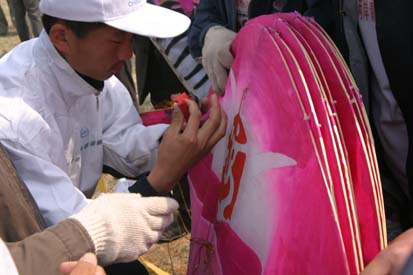 |
After the kite was chopped, the official bent over to sign his name in ink (in a different color) to prevent counterfeit chops. In addition, each team was given a number. Seeing the care taken for an amateur kite flying competition made me wonder -- will Olympic athletes get "chopped" on the arms when they enter the stadium? |
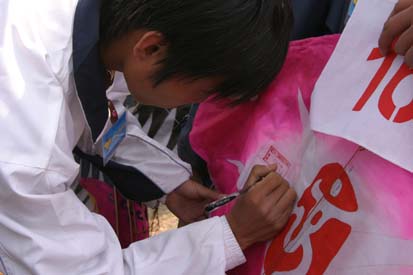 |
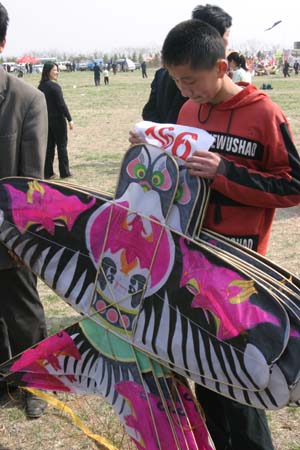 |
After the kites were chopped and numbered, the team members carefully looked them over to make sure nothing was torn or bent. Despite everything being so well organized, the authentication process was still a little chaotic - the Chinese are known for their utter disregard for the concept of lines - and I saw more than one kite get banged up. |
After that, it was time for the competition to begin!
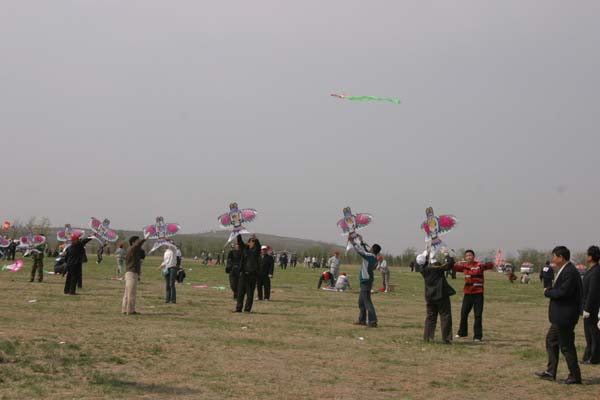
We never figured out exactly what criteria were being used, nor was it clear when each "event" started and stopped. Fortunately, we seemed to be the only ones in the dark, since everyone else moved right along. Maybe next year they'll print up a "visitor's guide" to the festival -- I certainly would have bought one, along with that t-shirt we never found!
The judges were themsleves equally inscrutable. I was pleased to see it was an international line-up, but I couldn't make sense of their scoring sheets and process:
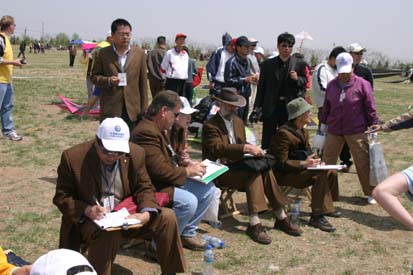 |
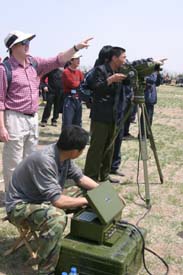 |
I felt sorry for them, sitting there in their heavy brown tweed jackets, since it was a hot day. I was also amused to see high-tech army equipment being used to measure the height of some of the kites. I wish they had let me look through the telescope, since it was impossible to see the highest-flying kites without them!
All in all, the judging remained a mystery. That was, in itself, a welcome novelty -- we're all so used to TV sports' obsession with judging, and it was nice to be able to step back and not really care about what got what score, since to us, all of the kites were beautiful and flew well.
That was especially true for the main event -- dragon kites!